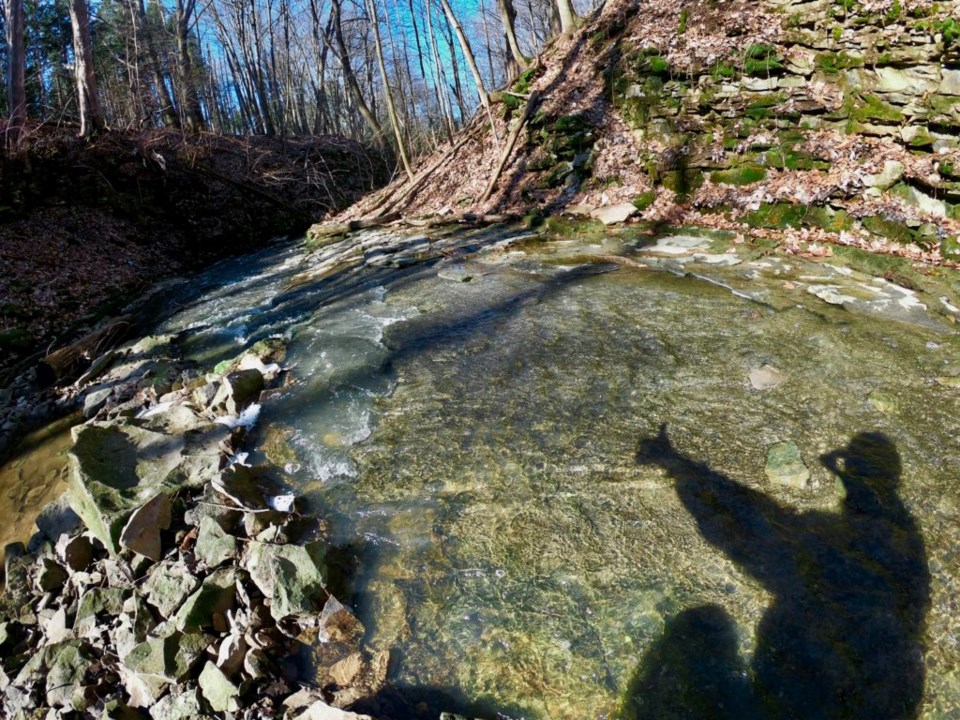
The news world hits us quickly on a regular day, but now the updates come just as quickly.
They also hit our very personal lives from angles we least expected. I have been trying to keep up with the current updates, and the closures of Niagara’s green and natural spaces have given me a lot to chew on this week, as I believe they have shone a light on how we mentally prioritize nature.
First, the schools, pubs, and shops closed, so parents and social groups flocked to the outdoors. Did parents hitting the trails have an epiphany as to how fun, cheap, and healthy this is for a family and kids? Do people as a whole have about a million other hobbies and occupations that may have smothered the idea of going outdoors in Niagara? Probably so!
For a very brief moment, people were reminded such areas are available for their enjoyment and well-being. A moment outdoors to breathe in fresh air, play with boldness, and get away from screen time for a bit.
“School’s out, forever,” as the song goes. And now, “Nature’s out, forever?”
Well, that depends who you ask. It is unknown how long the closures of the Bruce Trail, the Niagara Parks Commission, and the Niagara Peninsula Conservation Authority’s main outdoor properties will remain in place.
When the closures hit, social media showcased how some blatantly disobeyed the signs, which may bring a powerful glimpse into our deeper relationship with nature regarding its ownership, and how we perceive that as individuals. Some feel saddened and restricted by the loss of their ultimate pastime. Some see it as a last escape, when all other options are off the table, or perhaps a place to get out of home for an afternoon.
Nature is the only thing that humans didn’t create, but can suddenly be owned and therefore controlled. That’s where my mind is at! I will personally miss the natural hotspots that deliver, every time I visit them. Does that mean I would break the law to go hiking in my personal favourite area in Niagara? No way. These closures also go to show you the monumental influence of the organizations which oversee the affected areas, as these properties serve to protect biodiversity while spring continues to take off full throttle, minus the busy voices, boots, and roads.
Watching the fishing rods line up and the conservation area parking lots reach capacity two weeks ago was likely a phenomenon composed of three categories.
First, your outdoors enthusiasts who fish, hike, or bike on any day of the season. They are already there. Then, you’ve got people who have always loved such activities, and suddenly found themselves with the time to indulge. Sadly, this newfound free time likely came with a financial cost at home.
I believe where it really got tricky is when category three, those who normally haven’t ventured outdoors, showed up in waves and likely stressed the ecosystems, and added a sudden volume of people in close contact – even outside.
Objectively speaking, the closed areas are Niagara’s most biodiverse and enjoyable nature spaces. One of the best ways to customize your own trail now is to walk in town close to wooded neighbourhoods and low traffic. We may have to make do with that, but it certainly doesn’t compare to the wondrous waterfalls and cathedrals of trees tucked away into Short Hills Provincial Park, the Niagara Gorge, or Wainfleet Bog.
There are peer-reviewed studies which show that humans exposed to areas of higher biodiversity and of greater ecosystem health, experience greater physical and mental changes than in a park or an inner-city creek. These changes are to do with reported mood, reduced blood pressure, and molecular parameters within the body. We literally feel more alive in relatively “wilder” spaces.
From someone whose skin has seen a lot of mud and sun and snow, I understand that biologically healthier ecosystems also feel healthier to people. Little woodlots crammed into urban areas or exposed to outside stressors emulate the vibe of a traumatized person. Or perhaps, they are unoriginal and boring. Sure enough, nine times out 10, a quick peek into these ecosystems reveals that my gut feeling was correct. They are often overrun with invasive species, litter, and present very little wildlife or plant diversity. They don’t compete with our conservation areas and other hiking trails that are officially closed.
I know it is my best place for recharging and healing. Not just in the tree-hugging, spiritual image, but as a human. What is deemed as an essential under the title of a pharmacy, or exercise, can be found on the shelves and in the gymnasiums of the woods.
The natural areas were shut down due to COVID-19, not because it hides on the bark or the moss of the escarpment, but people had momentarily overcrowded our trails and parking lot systems, and a high risk for spread was possible.
I see a larger picture at play, one of irony. Across the Niagara Region, over the decade, natural ecosystems of all quantities and qualities have been targeted for their removal. Some of these land battles are ongoing. In a moment of sunshine, the open trails and deep green pockets reminded us that we really appreciate them and need them as well. Even the very last few, as we’re learning.
If you’re itching to hike or walk locally, make sure you check in on the updated laws as to which trails and their associated parking lots are closed. Days are strange, but they will become stranger when you become the first person to get fined for a solo nature walk. If you do walk, stay close to home, and keep your distance from others.
Meanwhile, open up your lungs to the spring air, and your hearts to those who need you.


